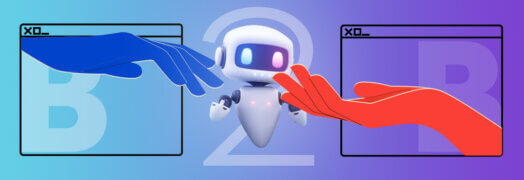Being only 23 years of age, I have been lucky to have grown up with a generation that had access to computers. I was one of the kids that said they wanted to be an artist when they grew up. I continued to love traditional art throughout my educational years. I grew up with mostly PCs and very basic programs (I only used Kid Pix paint shop and computer games). As a product of Gen Y, I understand and appreciate the privilege of being familiar with computer interfaces from a young age.
It wasn’t until high school when I was introduced to an Apple computer. It was very foreign and took me a while to become familiar with the new interface. Once I did, I knew it was a big deal, and from that point on, I was inspired to become a graphic designer. Never in my wildest dreams, though, did I think that I would be designing digital graphics and website interfaces for a career. If it wasn’t for one genius of a man, I would have never been able to make art such a rewarding, fulfilling and fun career.
Steve Jobs is responsible for changing technology in a literal sense, but he also changed the way people perceive and interact with technology by making it accessible and easy for anyone to use. He created a legacy of quality products, and was never afraid to push the envelope and think outside the box to make Apple the leader in technology for the masses. His technological innovations directly shaped web design, but his perception and high opinion of the importance of design also shaped the way in which all of us see his creations, and technology as a whole.
The following are ways in which Steve Jobs has changed the path of website design for the better…
- Efficient Processing: Jobs worked hard to learn the ins and outs of computer engineering. He pushed new computer hardware and software technologies further than many believed possible. In doing so, he made computer speed faster and memory space larger making it easier for businesses and individuals to be more self-sufficient and productive. Having more space to store files and a quicker ram to access them makes it possible to complete a website design and make it live in less time.
- Graphically Supported Interfaces: Early on, Jobs enlisted help to create a user platform that people would easily be able to navigate. He oversaw the creation of graphics and icons in which users can recognize and access files and software. He also stressed the improvement of pixels per inch making screen resolution smooth and easy on the eyes. This is very important in designing for the web, as designing with specific software, the designer must maintain a particular resolution for visually stunning and successful websites.
- Simplified/Improved Programming: Visual improvements to any interface, whether it’s for a website or for a computer platform, means there also needs to be improvements to the programming involved. Jobs had a large influence on the manipulation of many programming codes, including HTML, to make the development of updated platforms for the latest versions of the many Mac products. Improvements in programming for platforms have had much effect on programming for websites, and other digital applications accessed by Mac products.
- Truetype Fonts: One, of many, impressive contributions to successful digital communication design that Jobs made is the use and familiarity of certain fonts by Mac users around the world. Jobs collaborated with a designer and created computer specific (meaning not just for print) typefaces that, when viewed on a computer screen, look crisp and clean. Fonts, in the years before, looked rough and pixilated. In creating web-specific fonts, Jobs opened up a new world to digital and web designers to create crisp looking website and interface designs.
- Emphasis on Design: The industrial, graphic, digital, web, advertising and print designs that Jobs oversaw in his years with Apple has created a brand that now defines a large portion of computer users around the world. He showed us that technology could bring beauty into our lives and also be beautiful itself. His stress on simple, friendly user interface design and powerful application has affected technology and the way it is, and most likely will continue to be, designed for users now and in years to come.
As I sit here typing in front of my iMac desktop computer with my MacBook to my left and my iPod to my right, and a fresh career in graphic and web design, I wonder where I would be today without Steve Jobs.
Resources:
Navigation Arts
May’s Blog
Winning Web Works



